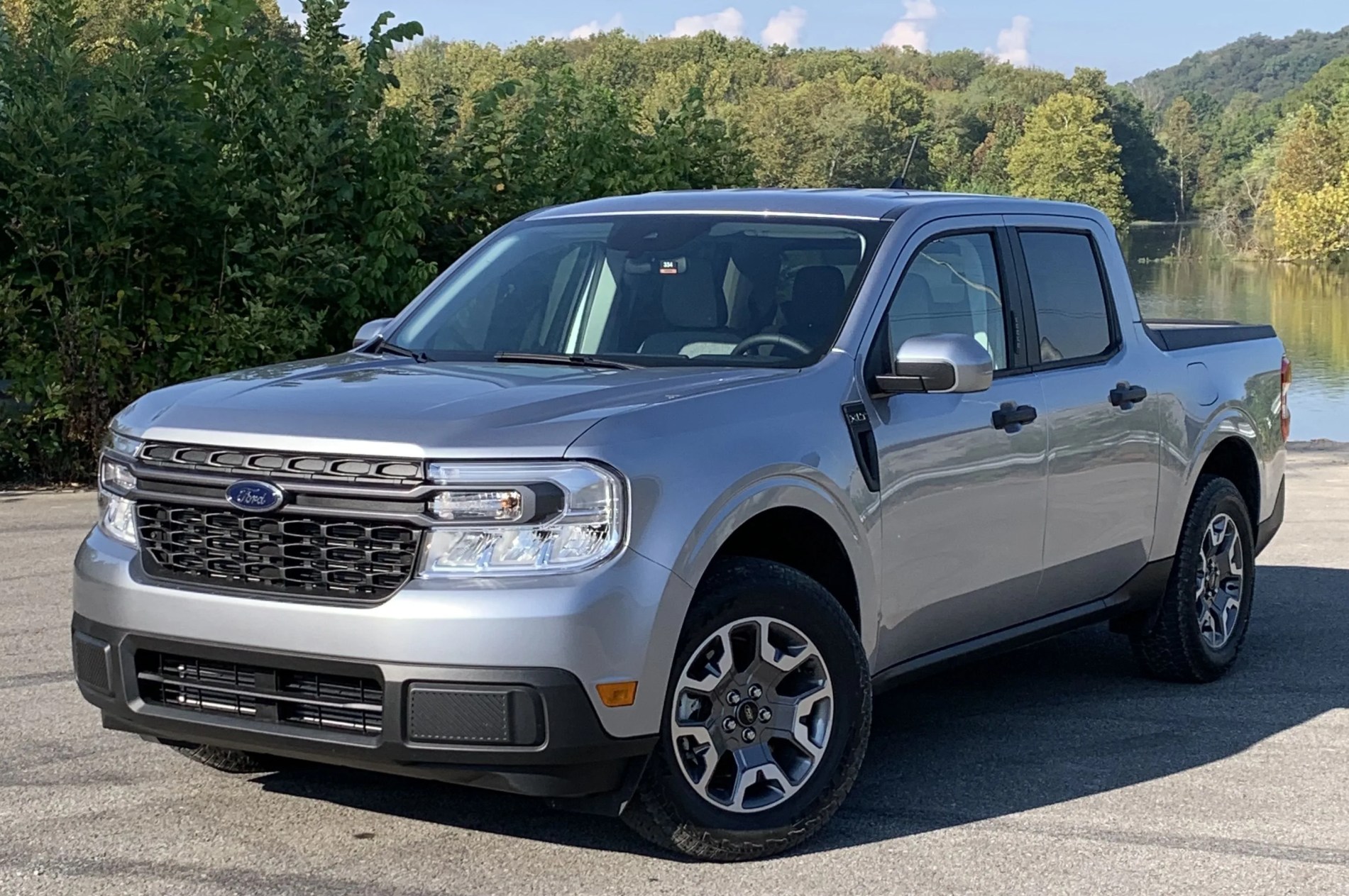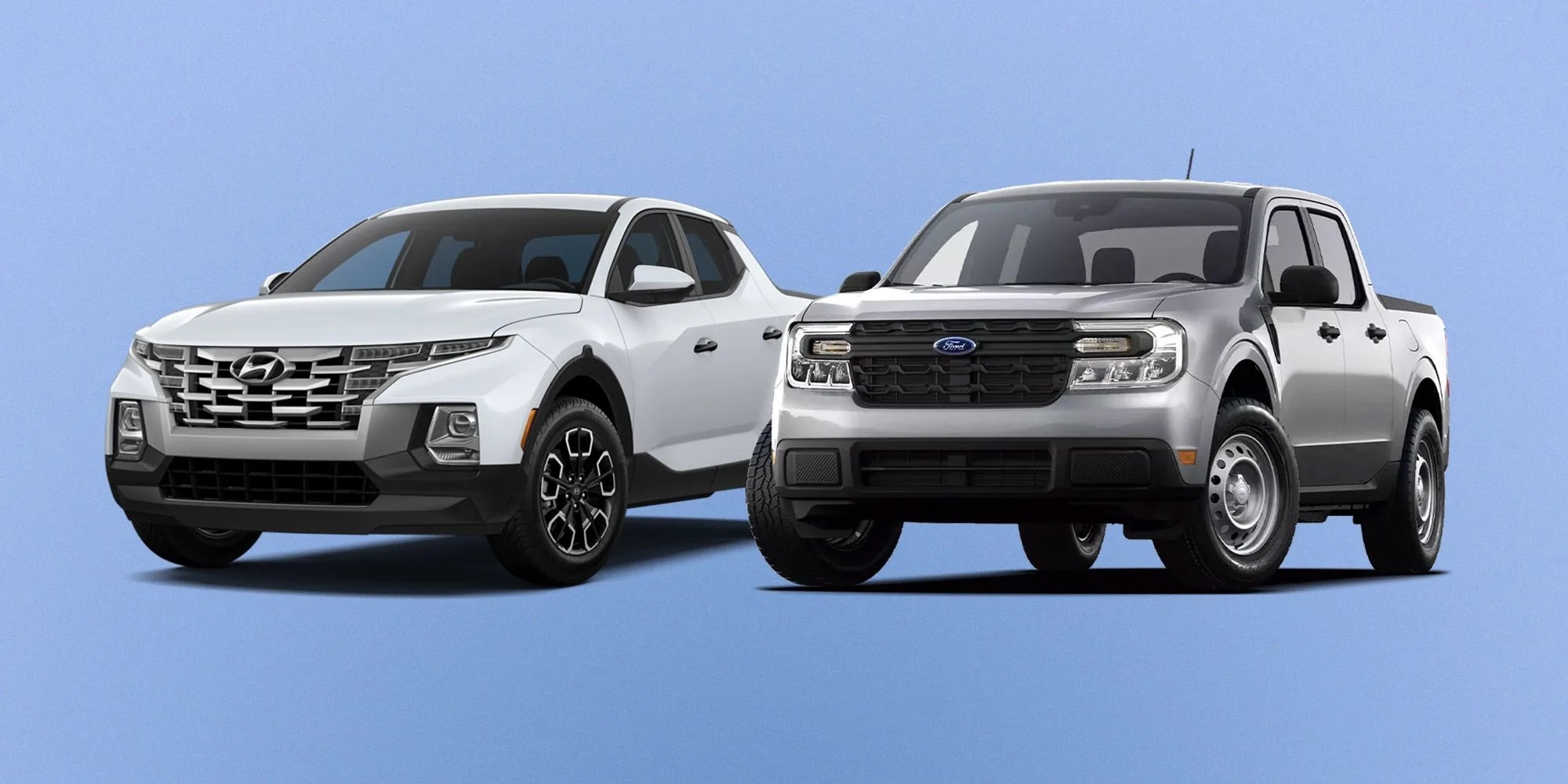Recently, Ford and Hyundai came up with a similar idea for the compact pickup: trucks are popular, but the traditional body-on-frame versions have grown large — and breathtakingly expensive. Why not offer truck versatility and cargo flexibility in a more accessible, affordable and efficient unibody (a.k.a. car-based) package?
And the fruits of their labors arrived right on top of one another. Both the Ford Maverick and the Hyundai Santa Cruz debuted to great fanfare last year. The natural question here in 2022, however, is which one you should buy. I tested both of them for a week around my home in southeast Michigan — and in the Maverick’s case, on the launch event in Tennessee — to find out.
The Maverick feels more like a truck than the Santa Cruz
 Tyler Duffy
Tyler DuffyCompact pickup meant different things to Ford and Hyundai. Ford leaned into the truck angle; the Maverick looks like a little F-150. It gets familiar Ford truck features, like the Fx4 off-road package found on other pickups. It has a longer 54-inch bed than the Hyundai, one that approaches the five-foot length you’d find in a mid-size truck.
Hyundai took a different angle. It won’t refer to the Santa Cruz as a truck; rather, it’s a “sport adventure vehicle” that “shatters both truck and SUV segments.” It has a more extended wheelbase than Hyundai’s Tucson crossover. But it draws heavily from the Tucson’s aggressive styling and, with a shorter 48-inch bed, gives off more of a Subaru Baja crossover with a truck bed cut kind of vibe. My colleague Will Sabel Courtney likened the Santa Cruz to a “warthog in a tuxedo.”
Dimensionally, the trucks are shaped differently. To use a readily on-hand metaphor for a young parent, the Maverick is Bert to the Santa Cruz’s Ernie. The Maverick is four inches longer than the Santa Cruz — it has a longer wheelbase and overall length than Ford’s three-row Explorer SUV. It’s also two inches taller. The Santa Cruz is 2.4 inches wider than the Maverick. And comparing fully-loaded AWD trims, the Santa Cruz is about 400 pounds heavier.







